- Weed Control to Promote Healthy Growth
- Here are three essential weed control tasks:
- Proper Watering Techniques for Optimal Fruit Development
- 1. Watering Frequency
- 2. Watering Depth
- 3. Time of Day
- Pruning for Enhanced Air Circulation and Disease Prevention
- 1. Remove Runners
- 2. Thin Out Excess Foliage
- 3. Cut Back Stems
- Fertilizing to Nourish the Plants and Promote Robust Growth
- 1. Soil Analysis
- 2. Organic Fertilizers
- 3. Mulching with Compost
- Pest Control Measures to Protect Against Common Strawberry Pests
- 1. Aphids
- 2. Slugs and Snails
- 3. Spider Mites
- Mulching to Conserve Moisture and Prevent Weed Growth
- 1. Choose the Right Mulch
- 2. Apply Mulch Properly
- 3. Maintain Mulch Throughout the Season
- Removing Runners to Focus Plant’s Energy on Fruit Production
- Monitoring and Addressing Signs of Disease and Nutritional Deficiencies
- 1. Disease Monitoring
- 2. Nutritional Deficiencies
- 3. Regular Soil Testing
- Question-answer:
- When should I trim back my strawberry plants?
- Should I fertilize my strawberry plants in July?
- Can I still harvest strawberries in July?
- How often should I water my strawberry plants in July?
- Can I plant new strawberry runners in July?
- Video: Most people don’t know this about Growing Strawberries
July is a crucial time for strawberry care if you want to have a bountiful harvest next year. As the summer heat sets in, it’s important to take specific steps to ensure the health and productivity of your strawberry plants. By following these three essential tasks, you can maximize the yield and quality of your strawberries for years to come.
The first task in July is to remove the runners from your strawberry plants. Runners are the long, thin stems that grow from the main plant and produce new strawberry plants. While this may seem counterintuitive, removing the runners allows the main plant to put more energy into producing larger, more flavorful berries. Simply cut the runners with a sharp pair of pruners, being careful not to damage the main plant.
Next, it’s important to provide adequate hydration for your strawberry plants in July. As the weather gets hotter, strawberries can quickly become dehydrated, which can negatively impact fruit production. Make sure to water your plants deeply and consistently, ensuring that the soil stays moist but not saturated. It’s also a good idea to mulch around the base of your plants to help retain moisture and regulate soil temperature.
The third essential task for July is to fertilize your strawberry plants. Fertilizing provides the necessary nutrients for healthy growth and fruit development. Choose a balanced, slow-release fertilizer specifically formulated for strawberries and apply it according to the manufacturer’s instructions. Be sure to water the plants after fertilizing to help the nutrients penetrate the soil and reach the roots.
Remember, July is a critical time for strawberry care to ensure a bountiful harvest next year. By removing runners, providing adequate hydration, and fertilizing your plants, you can set the stage for a successful strawberry season. The extra effort and attention now will pay off with luscious berries in the months to come.
Weed Control to Promote Healthy Growth
One important task in July for strawberry care is weed control. Weeds can compete with strawberries for nutrients, water, and sunlight, hindering their growth and reducing their yield. Therefore, it is crucial to keep the strawberry patch free from weeds to promote healthy growth and maximize harvest next year.
Here are three essential weed control tasks:
- Regularly remove weeds: Walk through your strawberry patch regularly and remove any weeds that have sprouted. Pull them out by hand, making sure to remove the entire root system to prevent regrowth.
- Mulch: Apply a layer of organic mulch, such as straw or wood chips, around the strawberry plants. This will help suppress weed growth by blocking sunlight and preventing weed seeds from germinating. Mulch also helps retain moisture in the soil, reducing the need for frequent watering.
- Use weed barriers: Consider using weed barriers or landscape fabric underneath the mulch to provide an extra layer of weed control. These barriers can be placed directly on the soil before applying the mulch, creating a physical barrier that prevents weeds from growing up through the mulch.
By implementing these weed control tasks in July, you can create a healthier environment for your strawberry plants to thrive. Remember to continue monitoring and removing weeds throughout the growing season to maintain their optimal health and yield.
Proper Watering Techniques for Optimal Fruit Development
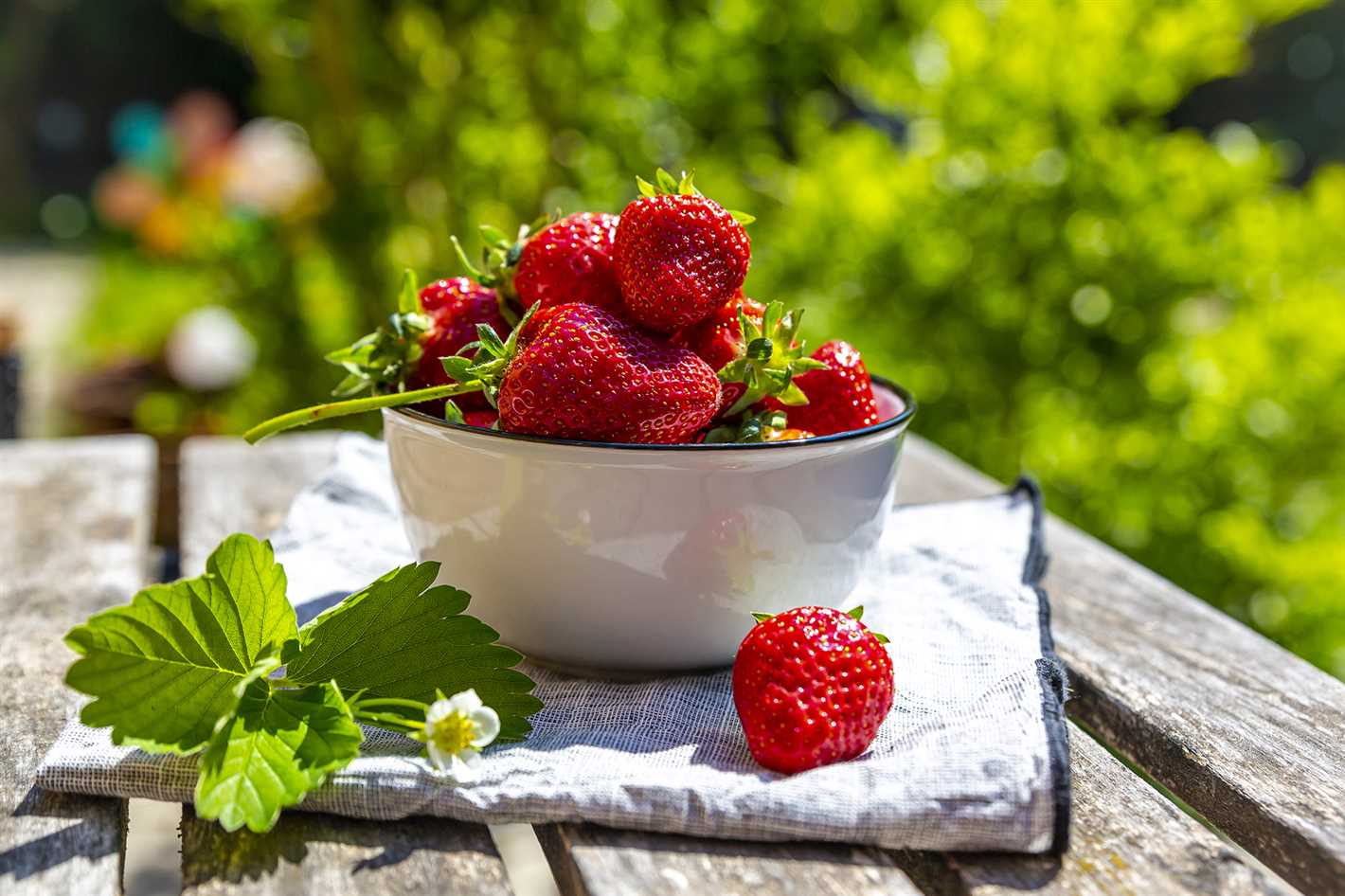
Watering is a critical factor in ensuring the healthy development and productivity of your strawberry plants. Here are some essential techniques to follow for optimal fruit development:
1. Watering Frequency
Strawberry plants require consistent moisture throughout their growing season. It is important to water them regularly, especially during dry spells or when the weather gets hot.
Check the moisture level in the soil by inserting your finger about an inch into the ground. If it feels dry, it’s time to water. Aim to keep the soil consistently moist, but not waterlogged.
2. Watering Depth
When watering, make sure to soak the soil to a depth of at least 6 inches. This encourages the strawberry plant’s roots to grow deep and strong, resulting in healthier plants and better fruit development.
It is recommended to use a soaker hose or a drip irrigation system to ensure that the water reaches the plant’s roots directly without getting the leaves wet. This helps prevent diseases and reduces water evaporation.
3. Time of Day
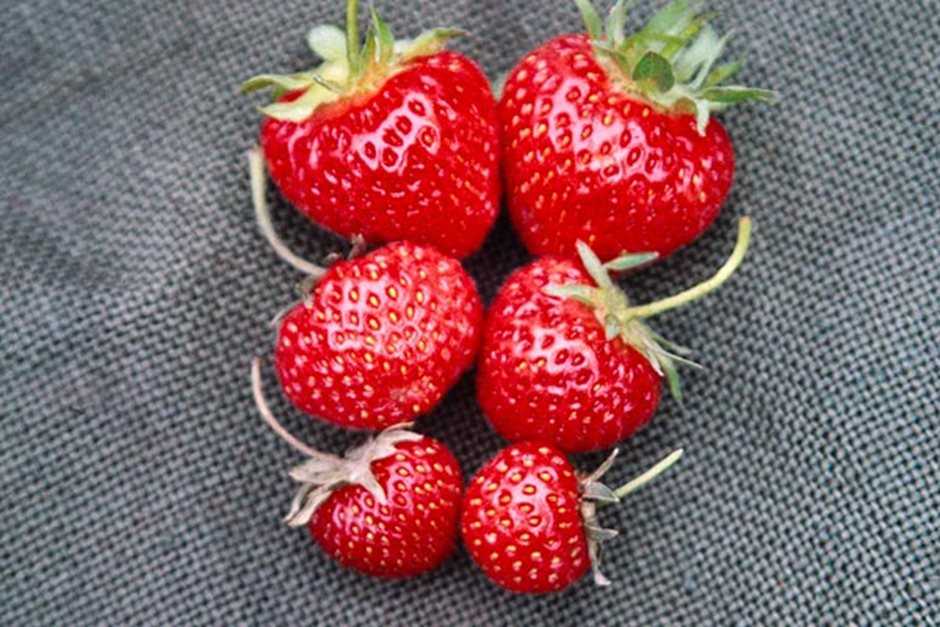
Water your strawberry plants early in the morning or in the late afternoon to minimize water evaporation and reduce wet foliage. This allows the plants to dry before evening, which can help prevent diseases caused by prolonged moisture on the leaves.
Avoid watering during the hottest part of the day, as the water can quickly evaporate before it reaches the roots, and the leaves may get sunburned.
Remember that the specific watering needs may vary depending on your climate, soil type, and the stage of growth of your strawberry plants. It is always a good idea to monitor the moisture levels regularly and adjust your watering schedule accordingly.
Pruning for Enhanced Air Circulation and Disease Prevention
Pruning is an essential task for maintaining healthy strawberry plants and ensuring a bountiful harvest. By removing excess foliage, you can enhance air circulation around the plants and reduce the risk of diseases spreading. Here are some tips for effective pruning:
1. Remove Runners
Strawberry plants produce runners, which are long stems extending from the main plant. While these runners can be used to propagate new plants, they can also crowd the bed and inhibit air circulation. Remove any runners that are not needed for propagation to ensure a healthier growing environment for your strawberries.
2. Thin Out Excess Foliage
Over time, strawberry plants can become overcrowded with leaves, especially in the summer months. Thin out the excess foliage by removing any older or damaged leaves. This will allow for better air circulation and reduce the risk of diseases taking hold.
3. Cut Back Stems
If your strawberry plants have become overgrown or are producing fewer berries, consider cutting back the stems. Look for any stems that are not producing fruit or have become too long and trim them back to encourage new growth. This will help rejuvenate the plants and promote a more bountiful harvest next year.
Remember to always use clean and sharp pruners to prevent the spread of diseases. After pruning, it’s also beneficial to remove any plant debris from the bed and apply a layer of mulch to suppress weeds and maintain moisture levels.
By practicing regular pruning, you can improve air circulation around your strawberry plants, reduce the risk of diseases, and ensure a productive harvest next year.
Fertilizing to Nourish the Plants and Promote Robust Growth
To ensure a bountiful harvest of delicious strawberries next year, it is crucial to provide the plants with proper nourishment. Fertilizing the soil will help replenish essential nutrients and promote robust growth. Here are three essential tasks for fertilizing your strawberry plants in July:
1. Soil Analysis
Before you begin fertilizing, it is important to analyze the soil to determine its nutrient composition. A soil test will help you understand which nutrients are deficient and which ones are in excess. You can purchase a soil testing kit from a garden center or send a sample to a professional laboratory for analysis. Based on the results, you can make informed decisions about the type and amount of fertilizers to use.
2. Organic Fertilizers
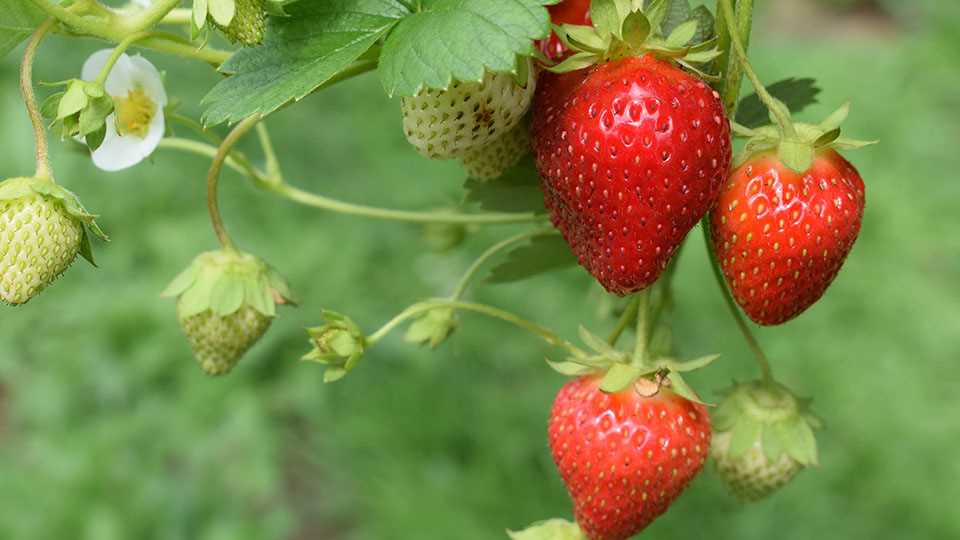
Organic fertilizers are highly recommended for strawberry plants as they release nutrients slowly and improve soil structure. Look for fertilizers that are specifically formulated for fruit-bearing plants. These fertilizers are typically rich in nitrogen, potassium, and phosphorus. Apply the organic fertilizer according to the package instructions, ensuring that it is evenly distributed around each plant.
3. Mulching with Compost
In addition to applying organic fertilizers, mulching with compost can provide extra nutrition to the strawberry plants. Spread a layer of compost around each plant, making sure to keep it away from the crown. The compost will gradually break down, releasing nutrients into the soil and improving moisture retention. Mulching also helps suppress weed growth and insulates the soil, protecting the plants during extreme weather conditions.
Remember to water the plants thoroughly after fertilizing to ensure proper absorption of nutrients. Regular fertilizing and mulching will help maintain the fertility of the soil and ensure healthy, vigorous strawberry plants for next year’s harvest.
Pest Control Measures to Protect Against Common Strawberry Pests
Strawberries are prone to a variety of pests that can damage the plants and reduce yields. Implementing pest control measures can help protect your strawberry plants and ensure a bountiful harvest. Here are some common pests to watch out for and the measures you can take to control them:
1. Aphids
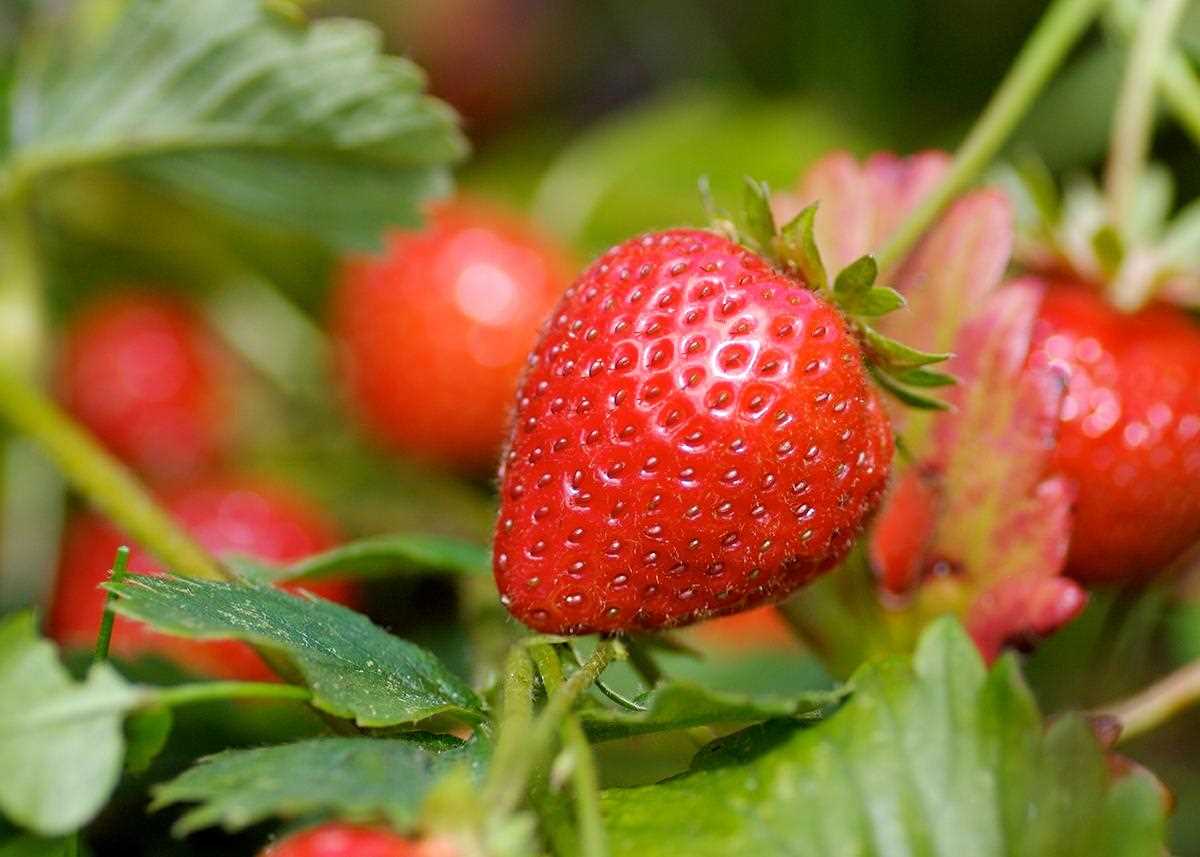
Aphids are small, soft-bodied insects that suck sap from strawberry plants, causing stunted growth and deformed fruit. To control aphids:
- Regularly inspect your plants for signs of aphids, such as curled leaves or sticky honeydew on the leaves.
- Remove heavily infested leaves and plants to reduce the overall aphid population.
- Introduce natural predators, such as ladybugs or lacewings, to eat the aphids.
- Use organic insecticidal soap or neem oil spray to control aphid populations.
2. Slugs and Snails

Slugs and snails feed on strawberries, leaving behind holes in the leaves and damaged fruit. To control slugs and snails:
- Remove any debris or mulch from around the plants, as they provide hiding spots for slugs and snails.
- Create physical barriers, such as copper tape or diatomaceous earth, around the plants to prevent slugs and snails from reaching them.
- Set up beer traps by sinking containers filled with beer into the soil. Slugs and snails will be attracted to the beer and drown.
- Handpick slugs and snails in the early morning or evening when they are most active.
3. Spider Mites
Spider mites are tiny pests that feed on the undersides of strawberry leaves, causing yellowing, stippling, and webbing. To control spider mites:
- Regularly spray your strawberry plants with a strong jet of water to dislodge and remove spider mites.
- Introduce predatory mites, such as Phytoseiulus persimilis, to feed on the spider mites.
- Apply insecticidal soap or neem oil spray to control spider mite populations.
By implementing these pest control measures, you can protect your strawberry plants from common pests and ensure a healthy and abundant harvest.
Mulching to Conserve Moisture and Prevent Weed Growth
Mulching is an important task in strawberry care during the month of July. It helps to conserve moisture in the soil and prevents weed growth, ensuring a bountiful harvest next year. Here are some essential tips for mulching your strawberry plants:
1. Choose the Right Mulch
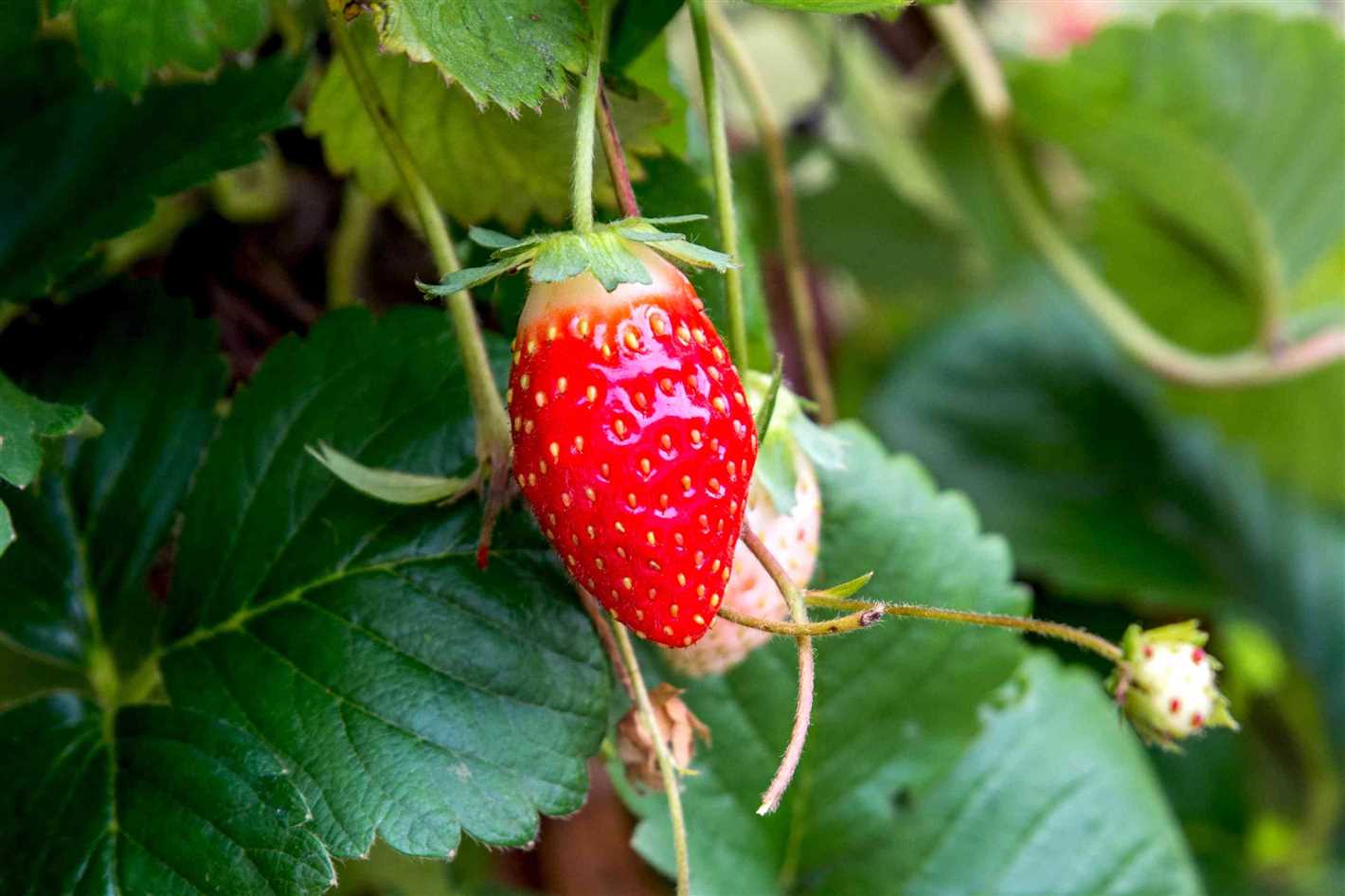
When mulching your strawberry plants, it’s important to choose the right mulch material. Organic mulches, such as straw or wood chips, are a great choice. They provide insulation, retain moisture, and suppress weed growth. Avoid using plastic mulch as it can increase the chance of disease and pest problems.
2. Apply Mulch Properly
Apply a layer of mulch around each strawberry plant, making sure to cover the soil surface completely. The depth of the mulch should be around 2-4 inches. Avoid piling the mulch too close to the crown of the plant, as this can cause rotting. Leave a small gap around the base of the plant to prevent moisture buildup.
3. Maintain Mulch Throughout the Season
Check the mulch periodically throughout the season and replenish it as needed. Over time, the mulch may break down or get displaced due to weather conditions or watering. Make sure to keep the mulch layer intact to maintain moisture and prevent weed growth.
By mulching your strawberry plants in July, you can ensure that they have the necessary moisture and protection from weeds, leading to a bountiful harvest next year. Follow these tips and enjoy a successful strawberry growing season!
Removing Runners to Focus Plant’s Energy on Fruit Production
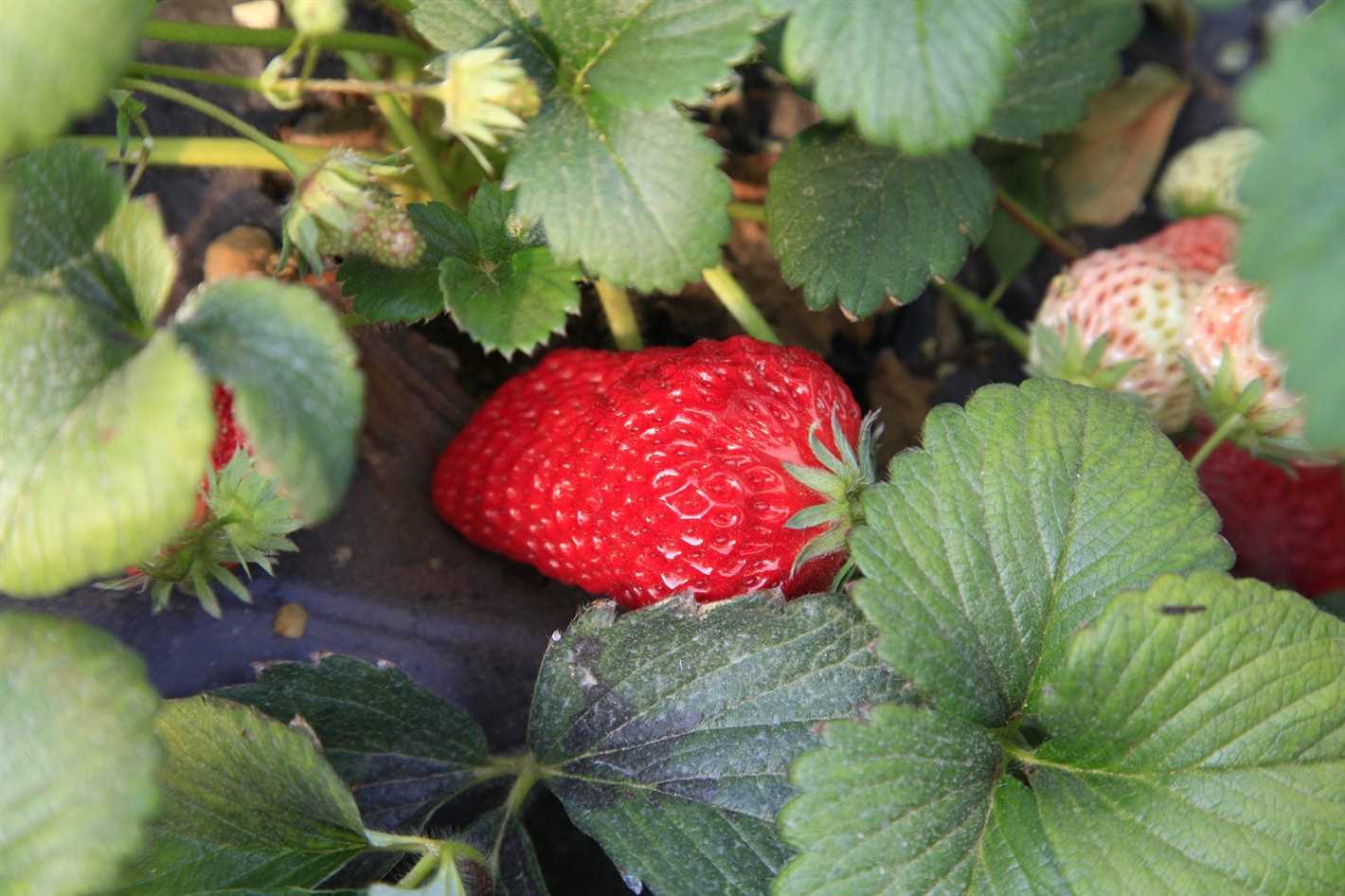
One important task in July for strawberry care is removing runners from the strawberry plants. Runners are long stems that grow out from the parent plant and take up energy and nutrients that could be used for fruit production. By removing runners, you can help the plant focus its energy on producing more strawberries.
Why should you remove runners?
- Runners divert energy and nutrients away from fruit production.
- Removing runners encourages the plant to put more energy into producing larger and sweeter strawberries.
- It helps prevent overcrowding and promotes better air circulation, which reduces the risk of diseases.
How to remove runners:
- Identify the runners on your strawberry plants. They are long stems that grow out horizontally from the parent plant.
- Use clean, sharp scissors or pruning shears to cut the runner stem close to the parent plant.
- Continue removing runners throughout the summer as they appear to ensure the plant’s energy is focused on fruit production.
What to do with the runners?
You can choose to save the runners and replant them to grow new strawberry plants or discard them. If you decide to save the runners, follow these steps:
- Select healthy runners with a good root system.
- Cut the runner from the parent plant, leaving a few inches of the runner attached.
- Dig a small hole in a new location in the garden or in a container filled with potting soil.
- Place the runner in the hole and cover the roots with soil, leaving the attached portion of the runner above the soil.
- Water the new plant regularly until it gets established.
Conclusion
Removing runners from strawberry plants is an essential task in July to ensure the plant’s energy is focused on fruit production. By removing runners, you can promote larger, sweeter strawberries and prevent overcrowding and diseases. If desired, you can also save the runners to grow new strawberry plants.
Monitoring and Addressing Signs of Disease and Nutritional Deficiencies
Monitoring the health of your strawberry plants is crucial to ensure a bountiful harvest next year. By keeping an eye out for signs of disease and nutritional deficiencies, you can take early action to address any problems and prevent them from spreading to the rest of your plants.
1. Disease Monitoring
Regularly inspect your strawberry plants for any signs of disease. Common strawberry diseases include:
- Gray mold (Botrytis cinerea): Look for gray fuzzy growth on the strawberries and leaves.
- Leaf spot (Mycosphaerella fragariae): Observe for small, purple spots on the leaves.
- Powdery mildew (Podosphaera aphanis): Check for a white powdery coating on the leaves.
If you notice any signs of disease, it is important to take immediate action. Remove and destroy affected plants, and consider using appropriate fungicides to control the spread of the disease.
2. Nutritional Deficiencies
Strawberry plants require a balance of essential nutrients to grow and produce healthy fruits. Common nutritional deficiencies in strawberries include:
- Nitrogen deficiency: Look for pale or yellowing leaves and stunted growth.
- Phosphorus deficiency: Observe for dark, purplish leaves and poor root development.
- Potassium deficiency: Check for scorched leaf margins and weak stems.
To address nutritional deficiencies, consider using a balanced fertilizer specifically formulated for strawberries. Follow the instructions on the fertilizer package for proper application rates and timing.
3. Regular Soil Testing
Regular soil testing is essential to monitor the nutrient levels in your strawberry beds. This will help you identify any deficiencies or excesses and adjust your fertilizer application accordingly. Contact your local agricultural extension office for information on how to collect a soil sample and where to send it for testing.
By monitoring and addressing signs of disease and nutritional deficiencies, you can ensure the health and productivity of your strawberry plants for the next year’s harvest. Remember to take prompt action and make adjustments as needed to provide the optimal growing conditions for your strawberries.
Question-answer:
When should I trim back my strawberry plants?
In July, you should trim back your strawberry plants by removing any old or yellowing leaves. This will help promote new growth and prevent diseases.
Should I fertilize my strawberry plants in July?
Yes, in July you should fertilize your strawberry plants with a balanced fertilizer. This will provide the necessary nutrients for the plants to produce a bountiful harvest next year.
Can I still harvest strawberries in July?
Yes, you can still harvest strawberries in July. However, the production may start to slow down as the season progresses. It’s important to pick the ripe strawberries regularly to encourage more fruiting.
How often should I water my strawberry plants in July?
In July, you should water your strawberry plants regularly, keeping the soil evenly moist. It’s important to water deeply to ensure the roots have access to water, but be cautious of overwatering as it can lead to root rot.
Can I plant new strawberry runners in July?
No, it’s not recommended to plant new strawberry runners in July. It’s best to wait until the early fall when the temperatures have cooled down. Planting runners at the right time will give them a better chance of establishing strong roots before winter.







